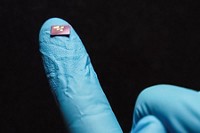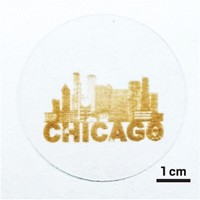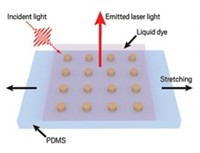Advertisement
Grab your lab coat. Let's get started
Welcome!
Welcome!
Create an account below to get 6 C&EN articles per month, receive newsletters and more - all free.
It seems this is your first time logging in online. Please enter the following information to continue.
As an ACS member you automatically get access to this site. All we need is few more details to create your reading experience.
Not you? Sign in with a different account.
Not you? Sign in with a different account.
ERROR 1
ERROR 1
ERROR 2
ERROR 2
ERROR 2
ERROR 2
ERROR 2
Password and Confirm password must match.
If you have an ACS member number, please enter it here so we can link this account to your membership. (optional)
ERROR 2
ACS values your privacy. By submitting your information, you are gaining access to C&EN and subscribing to our weekly newsletter. We use the information you provide to make your reading experience better, and we will never sell your data to third party members.
Nanomaterials
Engineered metasurface points toward combination 2-D and 3-D color displays
Silicon patterned with nanoscale towers produces flat color images and holograms simultaneously
by Neil Savage, special to C&EN
November 22, 2019

A new nano-imprinted surface that produces multiple color images—both flat images and holographic ones—could lead to new types of 2-D and 3-D displays (Nano Lett. 2019, DOI: 10.1021/acs.nanolett.9b03957).
The technology is based on a metasurface, a pattern of nanometer-scale structures that interact with and manipulate light in unusual ways depending on their size, material properties, and spatial arrangement. Scientists have used metasurfaces to create color images with potentially greater resolution than other current display technologies such as LCDs or OLEDs. Metasurfaces can also produce holograms when a laser passes through them. This work is the first to show that both holograms and standard color images, like those on computer displays, can be created by the same metasurface.
The team used electron beam lithography to build a 200 by 200 µm metasurface containing an array of nanosized silicon towers on a glass substrate. The towers were of two different sizes, with the smaller ones arranged in pairs. The towers’ spacing and the direction each tower faces control their interaction with light of different wavelengths or polarizations. Other factors, such as the angle at which the light strikes the elements or the refractive index of the material used, can also alter the image produced. This ability to choose among a wide range of properties to control the image makes metasurfaces attractive, says Basudeb Sain, a postdoctoral researcher in physicist Thomas Zentgraf’s ultrafast nanophotonics laboratory at Paderborn University.

Sain, along with Yongtian Wang and Lingling Huang of Beijing Institute of Technology and colleagues, used a computer algorithm to design an arrangement of towers for a metasurface that would produce a double image. Shining white light on the metasurface revealed a 2-D, two-color map of the Earth. But shining a red laser beam through it produced a 3-D holographic image of red flower blossoms and a green beam produced a hologram of the flowers’ green leaves. Shining both laser beams at the same time created a hologram of the whole plant. It would be possible to achieve the same effect with multiple layers of optical filters, but it would be much more complex, Sain says. “We used only one single metasurface with a single type of material,” he says.
Andrei Faraon, a physicist at the California Institute of Technology, calls this a very nice demonstration of the capabilities of optical metasurfaces. The metasurfaces in the study show fixed images, but the ultimate goal would be to use the technology to create dynamic displays that change over time, he says.
Sain says the metasurface could also be used for security holograms or optical information storage. One limitation of silicon is that its refractive index makes it difficult to use with wavelengths below 500 nm—into the blue visible range, making full-color images impossible. He says the team is interested in exploring other materials, such as silicon nitride or titanium dioxide, which would allow them to work with a greater range of wavelengths.
CORRECTION
This article was updated on Nov. 22, 2019, to clarify that in the images of Earth and the plant, the designs are on the left and the actual images produced are on the right.





Join the conversation
Contact the reporter
Submit a Letter to the Editor for publication
Engage with us on Twitter